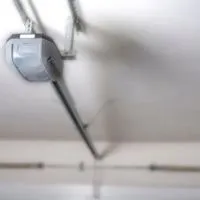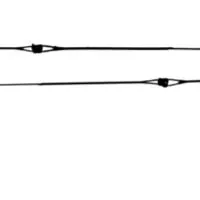How to run overhead electrical wire to garage. First, decide if the garage wiring is to be done underground or overhead after deciding on garage wiring through overhead. Gather parts needed to install overhead wiring.
You need to set the conduits. Tun a guy-wire after the conduits. Fix the power wire, and the garage door is wired.
I wanted to wire my garage door, but the floor was concrete. The idea was underground wiring, but I gave up. I decided it’s better not to make a mess and do such hard work. I’ll have to fix the concrete floor if I dig it up, and cleaning will be necessary. The other option was overhead wiring.
Overhead isn’t better than underground, but it is less messy. It’s easier when the wiring doesn’t require digging. I chose overhead wiring for that reason. I installed wiring from above, and it was very successful. The steps of wiring aren’t challenging to follow. So keep reading.
How to run overhead electrical wire to garage
Choosing to put lines through above is wise. The use of lines underground may be better in safety aspects, but it’s not better when you want to install the lines and stay away from messes conveniently. Rather than underground, soar the wires through the sky. You’ll need poles to support the wires.
First, plan the wiring and where to install the poles and the parts required for wiring. Then placing the garage lines and making correct connections is the priority. After connecting, the garage door should be tested. Read the steps.
You’ll need basic electrical and carving skills to start the battery. Both cutting and attaching wires are needed to wire. You shouldn’t just start wiring without anything. Codes in each area of the county need to be followed.
Conduits
Take the cables that you have selected and attach them to the conduits. The conduits should be 13 feet long and be lifted above the ground. Get another conduit and install it on the side of the open garage.
The length should be in check because it should be ok for all types of vehicles. If the height of installed wires is low, you’ll know that the wires will be a hurdle while parking the vehicle.
The wires can break if they collide with the vehicles. So set proper 13 feet height. The conduits will get you the proper height. It’s better if you are able to get mastheads that are weatherproof.
Guy wires
The wires weigh because they have rubber and other materials inside them. So even if you hang them at 13 feet, they may be down at 10 feet. Guy wires control this weight.
Guy wire is used with power cables as they support the weight of the power cables. Using additional support helps the guy wire hold the weight better.
Give the power cables a bit of loosening since the wires will contract in winter, and tightening can damage them. So at least an inch of a distance is enough.
This is because they also expand in winter, and you don’t want them hanging too much. The wires will automatically be set in length and weight when attached with guy wires, and the extra support you added makes it better. Attach guy wires and power cable without fail; at least 5 to 6 inches should be taped.
This grips the power cables with guy wires and makes the uplift stronger. Measure wire length and tape according to its length. Take the wires to the garage from above, and don’t skip taping.
Finishing
The clamps can help with a guy wire. You can use guy wires with guy wire ties, and it’ll get easier. Simple wires can also have clips.
The conduits should be rigid. This makes the use of the overhead more robust and more reliable. Using insulators and other wires is necessary.
Conclusion
The wiring is hard, but that’s in the case of underground wiring. You can use overhead wiring if you want quick work.
Overhead wiring requires less planning and no mess at all. However, overhead wiring isn’t suitable for aesthetics. Call a professional if you don’t have proper knowledge about electrical wiring.
Related Guides


